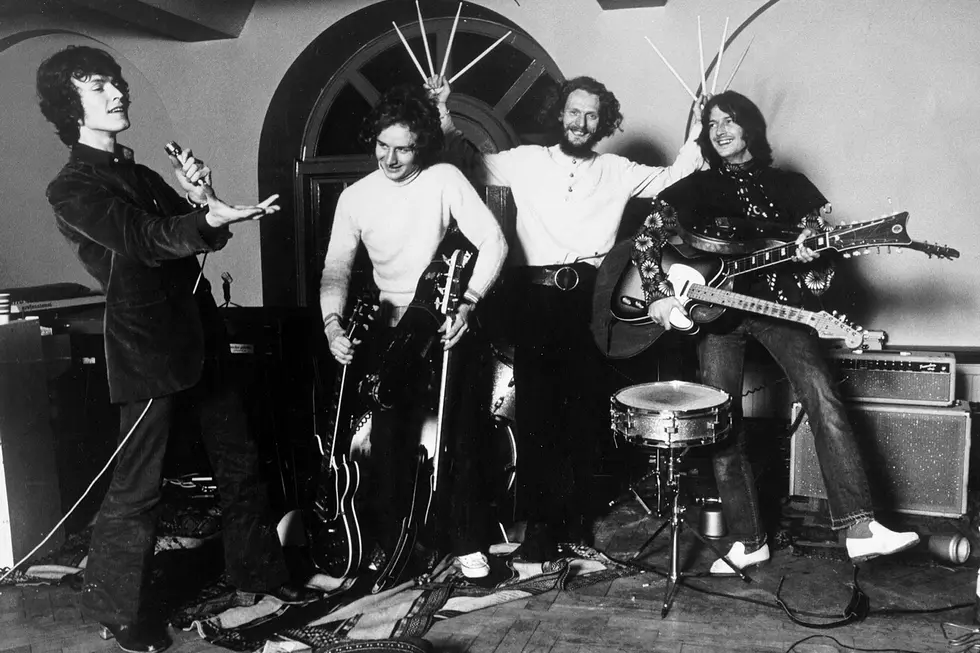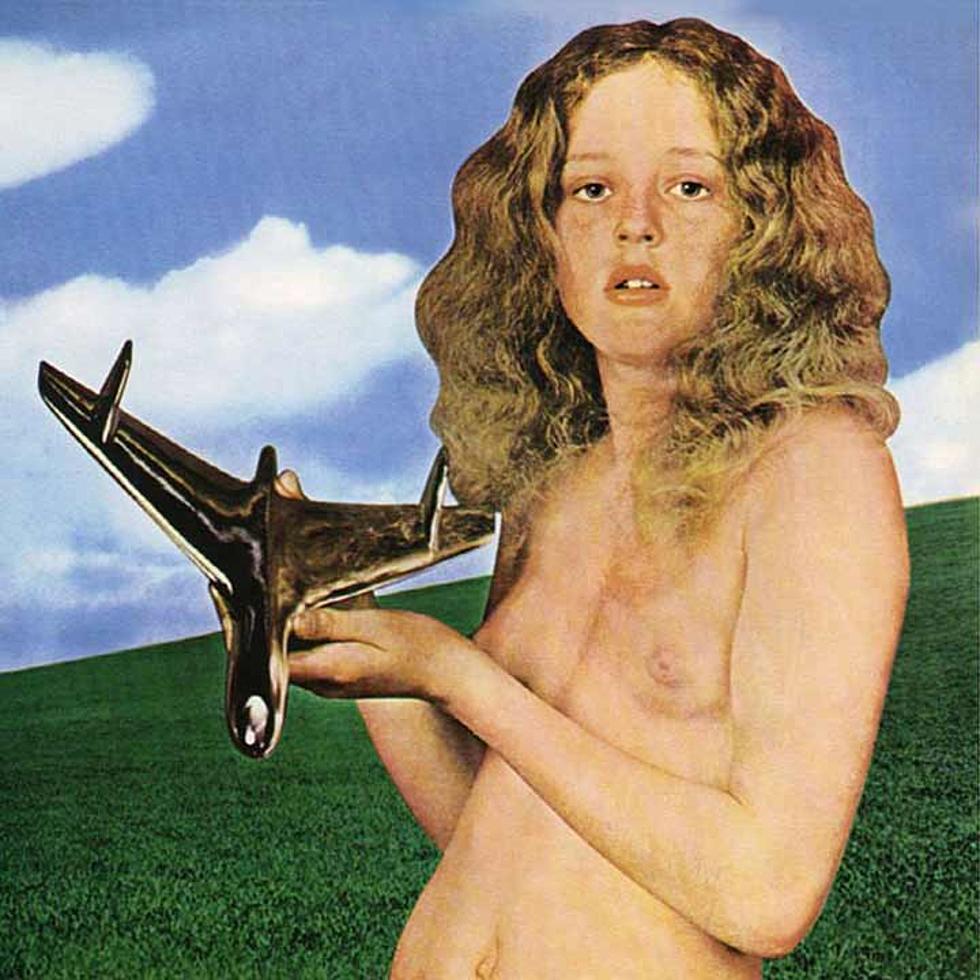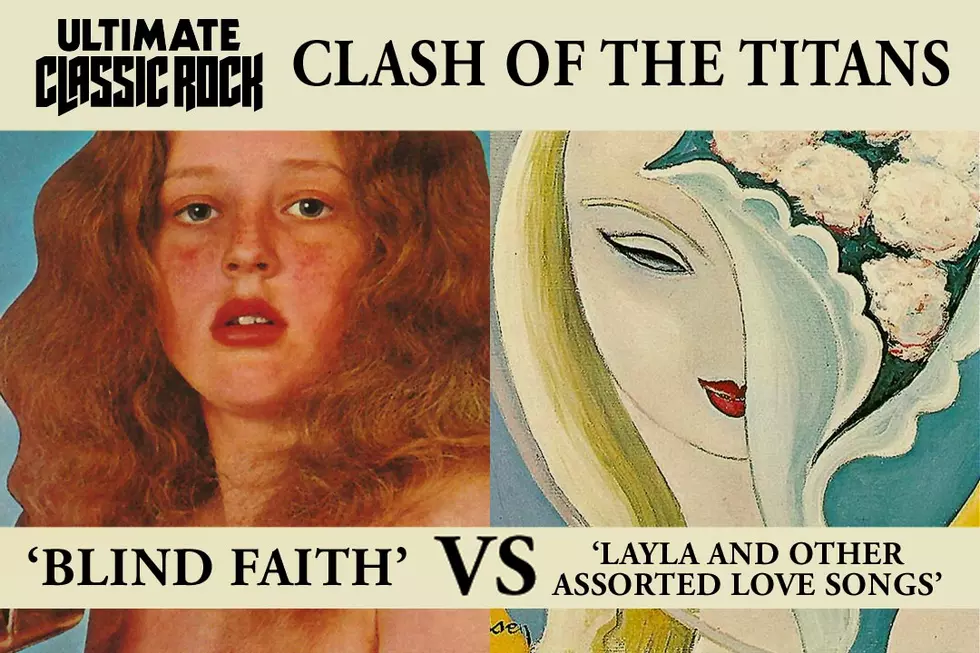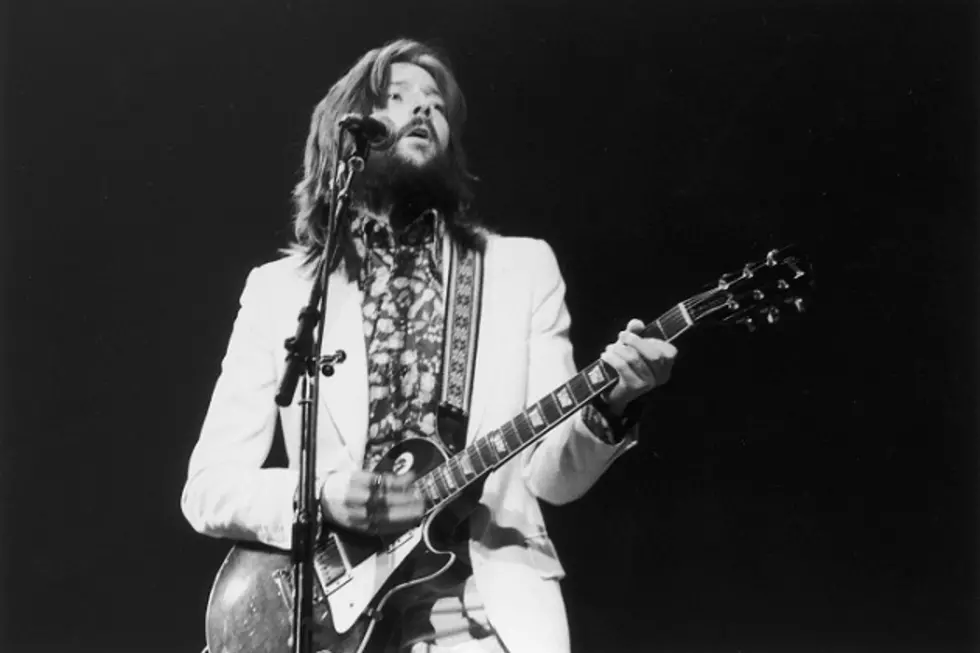
When Blind Faith Played Their First Concert
The remnants of two superstar '60s group came together -- at least for a moment -- in the form of Blind Faith. Alas, the jaw-dropping combination of Eric Clapton and Steve Winwood would make their debut with a concert in London's Hyde Park on June 7, 1969, even before their only album was released.
Clapton’s previous band, Cream, had played their final show together the previous November at the Royal Albert Hall in London. It was the culmination of a lengthy period that saw Ginger Baker and Jack Bruce at each other’s throats. Clapton, it seemed, was looking to make a quick getaway. At nearly the same time, trouble was brewing with Winwood’s outfit Traffic. By the beginning of 1969, Winwood had likewise gone solo -- and without a second thought.
"Because of the way I ended [my first band] the Spencer Davis Group, I saw no reason why I shouldn't leave Traffic and move on," he told Mojo. "It seemed to me a normal thing to do."
As Cream were breaking up, Clapton bided his time with a few memorable sideman roles, sitting in on the George Harrison-penned Beatles track "While My Guitar Gently Weeps" and appearing as part of the Rolling Stones’ muddled Rock and Roll Circus. His next collaboration, as off the cuff as the rest, would make headlines. “I had been thinking a lot about Steve Winwood,” Clapton wrote in his autobiography. “So I called him and started going over there. We’d drink and smoke and talk a lot, and play our guitars.”
It was a pleasurable reprieve -- at least for a while. Before long, however, a certain red-haired drummer interrupted the tranquil atmosphere. “One night Steve and I were at the cottage smoking joints and jamming when were surprised by a knock at the door,” Clapton wrote. “It was Ginger. Somehow he had gotten wind of what we were doing and had tracked us down.”
While Winwood was intrigued by Baker’s presence, Clapton experienced pangs of internal panic, keenly aware of what might happen next. “Ginger’s appearance frightened me because I felt that all of a sudden we were a band, and with that would come the whole [manager Robert] Stigwood machine and the hype that had surrounded Cream.”
That machine's grinding wheels began to whir with the addition of bassist Ric Grech. Clapton's latent misgivings were embedded in the name he offered for the quickly coalescing group -- Blind Faith.
Not everyone was thrilled with the new moniker but, like everything else, there seemed to an innate momentum to this process that no one person could slow. “I knew it was a hype as soon as it was called Blind Faith,” Winwood recalled in a separate interview with Mojo. “I think the name was largely Eric’s idea, but I felt it had certain negative implications. I went along with it only because, after a while, if a band is successful, the name loses its meaning and just becomes a label.”
Blind Faith held a number of rehearsals at Clapton’s home, jamming around together and creating new songs. They entered Olympic Studios and Morgan Studios in London sporadically between Feb. 20 and June 24, 1969, laying down the tracks for what would become Blind Faith's eponymous debut record.
By June 7, they were ready for an official coming-out party -- in front of 100,000 people at Hyde Park in London. To say it was an immense gathering for a band’s first gig is an understatement, and Blind Faith's shaky performance reflected that. “I was nervous,” Grech later remembered. “Everybody was. We knew the numbers, but not to the extent of not having to think about them.” Blind Faith would have to get its bearings out on the road.
Meanwhile, the supergroup's new album arrived just two months after the Hyde Park performance -- and shot to No. 1 in the U.K., Canada and in America. Songs like "Presence of the Lord," "Had to Cry Today" and "Can’t Find My Way Home" caught on in a big way, becoming fixtures on FM radio stations across the country. The platinum-selling Blind Faith even edged into Billboard's R&B Top 40.
Still, controversy loomed over the album’s risqué cover art, which featured a pre-pubescent girl holding a chrome airplane. To the band, it represented the dichotomy between innocence and scientific achievement. To record dealers, it was unsellable smut. Atlantic Records head Ahmet Ertegun stepped in to smooth things over. “We do not agree that the original sleeve is offensive,” he announced to the press. “But if any dealers do not want that cover, we will happily supply them with an alternative.”
As the tour continued, however, Clapton's initial misgivings began to loom large. It didn’t help that Delaney and Bonnie, the tour's loose and familial opening act, offered such a thrilling example of creative contrasts. “If Delaney and Bonnie had never played on the same bill as us," Clapton said in his autobiography, "it is possible that Blind Faith might have survived and regrouped at the end of the tour.”
That's not the way it turned out, of course. Blind Faith performed their last show together in Honolulu, Hawaii, on Aug. 24, 1969, less than a month after releasing their one and only record. For each of its four members, the band has remained a storied, though ever so brief, part of their distant past.
In the immediate aftermath, Clapton briefly joined Delaney and Bonnie, while Winwood, Baker and Grech decided to continue on in a new outfit named Ginger Baker’s Air Force -- though that, too, came to an end just a year later. Clapton would memorably reunite with Baker for a series of 2005 Cream shows, while Grech subsequently became part of a reformulated version of Traffic with Winwood. Otherwise, a few chance meetings between Winwood and Clapton -- notably over three sold-out 2008 shows in New York City -- were as close as Blind Faith has ever come to a return engagement.
Blind Faith Albums Ranked Worst to Best
More From Ultimate Classic Rock









